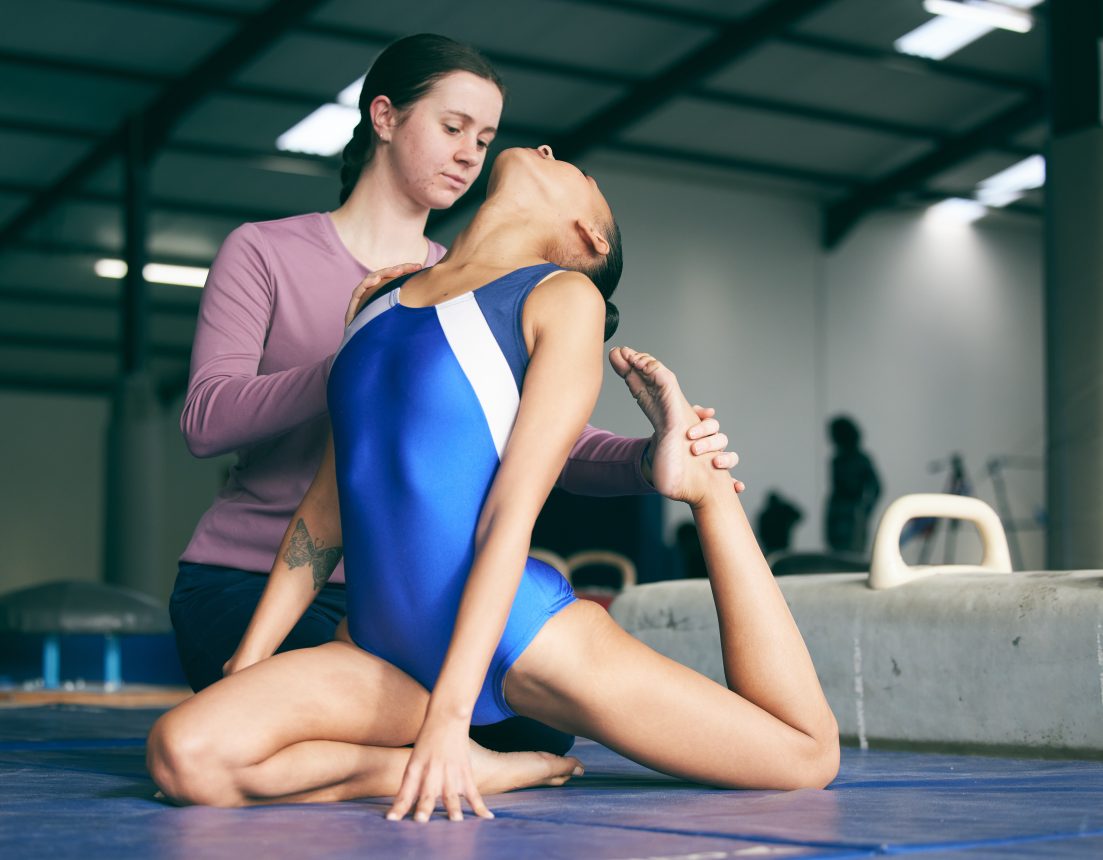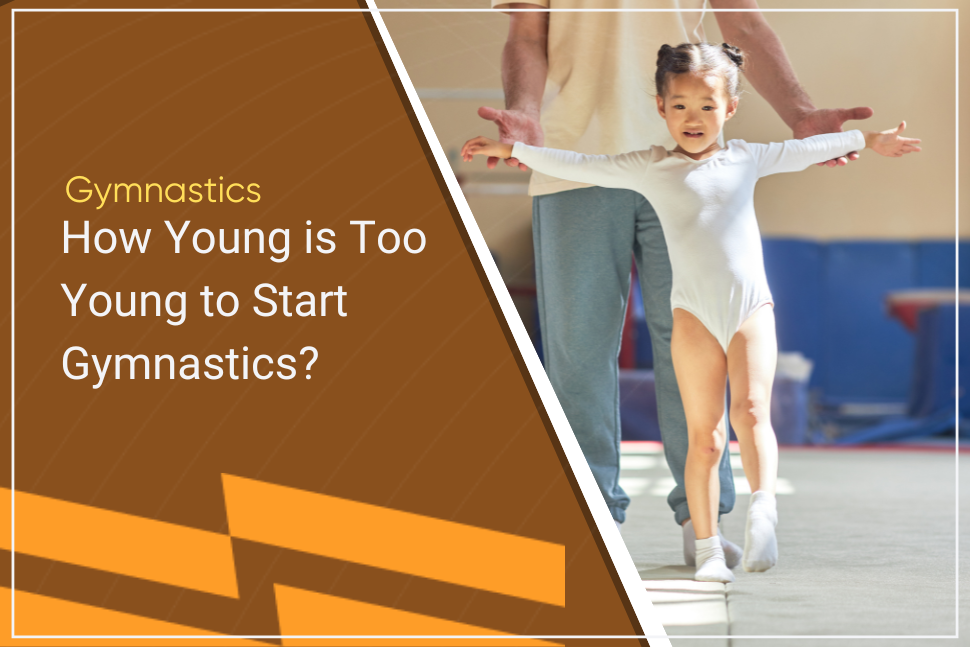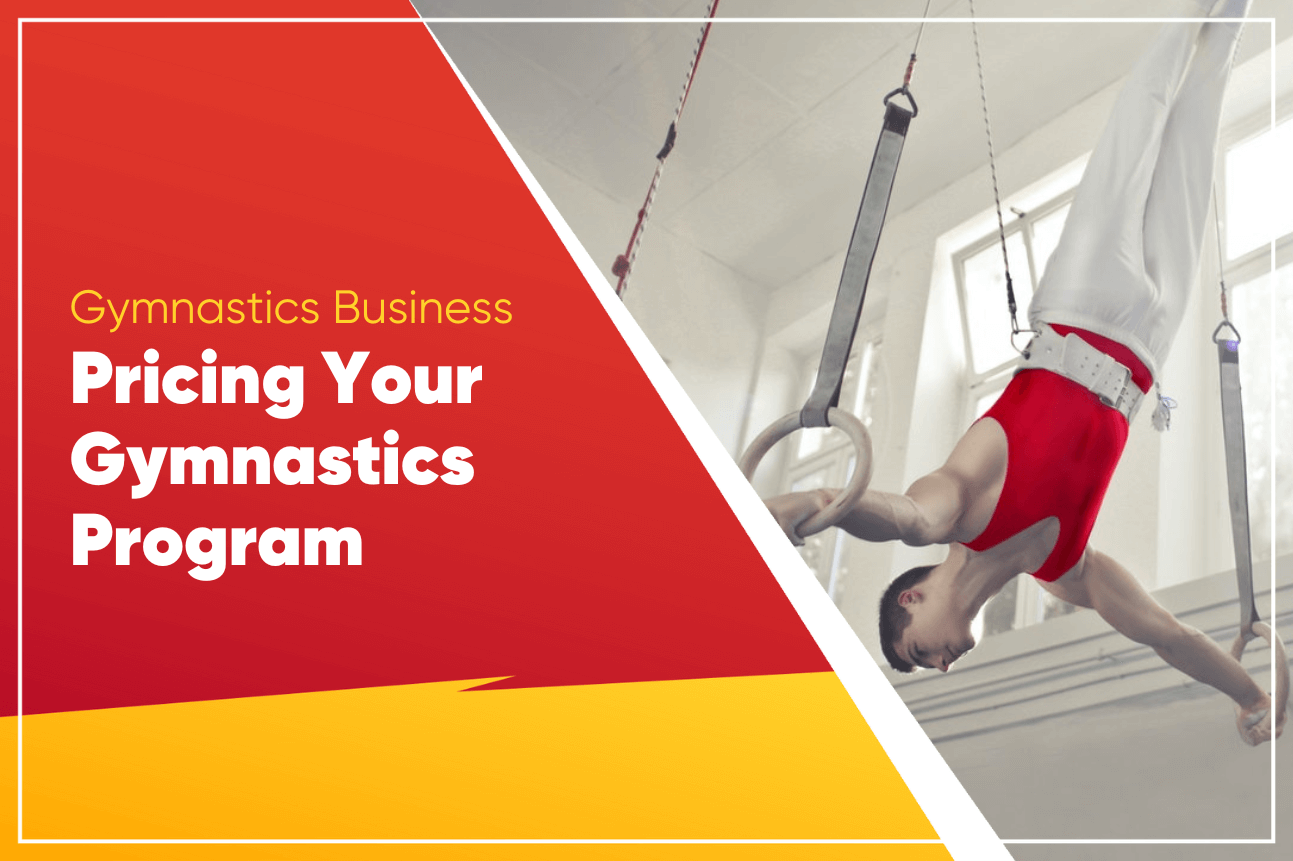The Coach's Guide to Gymnastics Injury Prevention

Like a proud parent, you watch your gymnast gliding through the air, your heart pounding as she nails one move after another. But then she misjudges her landing. Her ankle twists unnaturally, and she crashes to the mat.
You rush to her side, your mind filled with anxiety. You’re experiencing every coach’s nightmare - a talented athlete writing in agony before your eyes.
Watching an injury unfold is a gut-wrenching experience for a coach. Once you’ve experienced it, fear and anxiety of a recurrence is ever-present. Yet, the intricate skills and high-risk movements of gymnastics mean that injury is a constant concern.
This article provides practical strategies on how to prevent injuries in gymnastics programs. We’ll identify the most common causes of injury, discuss how to foster a culture of safety and explore how to implement effective training techniques to keep your gymnasts injury-free.
Common Gymnastics Injuries
Gymnastics has one of the top injury rates of any sport. The most common types are repetitive stress and instability-related. The area of the body that is most affected is the knees.
Gymnasts are constantly landing, which places absorption stress on their joints. If the landing force doesn’t dissipate correctly, it goes directly to the knees. This can lead to patellar tendinosis, which causes generalized pain around the kneecap.
The repetitive, shock-absorbing nature of the sport also means that ACL tears are common. Ankle strains and sprains are also commonplace. These are usually caused by a one-off lousy landing.
Lower back pain is also common among gymnasts, caused by the hyper-extension of the lower back as they are doing their routines. This can cause a lot of strain to the lower lumbar region if the athlete doesn’t have good core strength to supplement the hyperextension.
Gymnasts must work on developing stability to balance their high level of flexibility. Stability helps to control flexibility so that the athlete can control each joint with the muscles. If they can’t control their flexibility, injuries are likely to occur.
Another common injury, especially among young people, is what is known as a gymnast’s wrist. Young gymnasts use their hands with their growth plates open, putting too much load on the growth plates of their wrists. In effect, they are walking on their arms. This unnatural load causes the growth plates to close early, so the bones don’t grow properly. This can result in mismatched wrist bones, resulting in lifelong wrist weakness.
Elbow pain is another common injury for gymnasts. This often results from shoulder weakness in the rotator cuff muscles that stabilize the upper arm. Weakness in this area transfers the strain to the elbow on such weight-bearing movements as tumbling and vaulting.
Shoulder impingement causes shoulder pain when you raise your arms overhead. It also results from weakness in the rotator cuff and the muscles surrounding the shoulders, such as the trapezius and rhomboids.
ACL Tear Focus
The knee's anterior cruciate ligament (ACL) provides leg stability and connects the femur to the tibia. Its main functions are stopping the tibia from sliding forward relative to the femur and stabilizing the knee during rotational movements.
ACL tears are common among gymnasts. They have been identified as having the following causes:
- High impact landings
- Quick direction changes
- Bad technique
- Muscle imbalance
- Fatigue
High-impact landings place a lot of stress on the knee joint. A sudden, forceful landing can overwhelm the ACL. Poor technique, such as landing with straight legs or collapsing the knees inward upon landing, can exacerbate this. Quick pivots also increase the risk of an ACL tear.
If an athlete has a muscle imbalance between the quadriceps and hamstrings, they increase their risk of an ACL tear. If the hamstrings are weaker, they won’t be able to adequately support the knee, putting too much load on the ACL. Fatigue only worsens the problem because weary muscles provide less control and stability.
How To Avoid An ACL Tear
The best way to mitigate the risk of an ACL injury is to include targeted strength training exercises in the student’s training program. The program should allow the athlete to develop balanced strength between the quads and hamstrings.
The best exercises to develop balanced lower body strength and build muscle support around the knee are:
- Leg Extensions
- Leg Curls
- Squats
- Lunges
- Glute Kickbacks
To improve overall balance and stability, you should include core exercises such as planks, oblique twists, and leg raises.
Proper landing technique is also critical to ACL injury prevention. Teach your students to land softly, with bent knees and their hips back. This ensures that the landing impact will be absorbed through the muscles rather than the ligaments. The knees should remain aligned over the toes during landings to prevent inward knee collapse.
Training should be progressive so that the complexity and height of jumps occur gradually. This helps the athlete build strength and refine their technique by prematurely overloading the knee.
You should also incorporate balance and proprioception training into your athlete’s overall program. Include balance drills with balance boards, single-leg stands, and stability exercises that improve proprioception, which is the awareness of where your limbs are in space.
Here are some effective balance and proprioception exercises:
- Single-Leg Balance with Eyes Closed
- Description: Stand on one leg with eyes closed to challenge proprioception and balance.
- How to Perform: Have the gymnast stand on one leg, maintaining balance for 30 seconds to 1 minute. Gradually increase the duration as balance improves.
- Bosu Ball Squats
- Description: Squats performed on a Bosu ball to engage stabilizer muscles and improve balance.
- How to Perform: Place a Bosu ball dome-side up. Have the gymnast stand on the ball with feet shoulder-width apart and perform squats, ensuring proper form and controlled movements.
- Single-Leg Deadlifts
- Description: A strength and balance exercise that targets the hamstrings and glutes while enhancing proprioception.
- How to Perform: Stand on one leg, with the other lifted behind. Bend at the hips, keeping the back straight, and reach the ground with both hands. Return to the starting position and repeat. Ensure control and balance throughout the movement.
Supportive gear and proper equipment also help prevent ACL injuries. Knee braces provide additional support during high-risk activities, while proper footwear provides cushioning to reduce the amount of force reaching the knee.
Implementing a comprehensive ACL prevention program involves regular conditioning, technique reinforcement, and proper rest and recovery. Dynamic warm-ups, such as high knees, butt kicks, walking lunges, and dynamic stretches, prepare the knee joint for activity, while cool-down routines with static stretching help maintain flexibility and reduce muscle stiffness. Regular strength training and plyometric exercises, like box jumps, jump squats, and plyometric lunges, build explosive power and improve landing control.
Continuous feedback during training helps correct form and technique, while video analysis provides valuable insights into mechanics that need improvement. Scheduled rest days and recovery techniques, such as foam rolling, stretching, and ice baths, are essential to prevent overuse injuries and ensure that athletes remain in peak condition.
Educating athletes and coaches about ACL injury prevention is crucial. Regular workshops, training sessions, and information resources help raise awareness and reinforce the importance of proactive measures. By prioritizing these strategies, coaches can significantly reduce the risk of ACL tears, allowing gymnasts to perform confidently and safely.
5 Tips to Prevent Overuse Injuries
Gymnastics involves an incredible degree of athleticism. As a coach, you aren’t able to prevent all injuries. The most well-prepared student may land awkwardly and tear their ACL. However, there are several preventable overuse injuries. These result from too much stress and not enough rest.
Here are five tips to prevent overuse injuries:
- Vary the routine: Overuse injuries occur when the student repeatedly experiences microscopic stress to a tendon, ligament, or bone. This causes repetitive wear and tear over time, which can result in an overuse injury. By varying your student’s routines, you’ll give stressed body parts time to rest to prevent cumulative stress build-up.
- Encourage your students to take days off: Children don’t have the same level of muscle strength as adults, so their muscles cannot absorb impact stress as efficiently - it goes directly to the bones. So, the younger your students are, the more days of rest they will need. Even high school or college-level athletes should have at least one day each week when not training or competing.
- Educate your gymnasts not to train or compete through pain: If they do, a minor injury can develop into a serious one that requires surgery, potentially jeopardizing their gymnastics future. Often, young athletes feel so much pressure to perform that they feel they have to train through pain, keeping the injury to themselves. As their coach, you have the task of tempering that pressure to create an environment of safety first. Involve parents in this discussion so the athlete’s support system is rock solid in promoting injury prevention first.
- Encourage your students to tell you whenever they experience any niggling pain or injury: Assure they don’t have to worry about not letting you or their teammates down. Keeping safe trumps every other concern.
- If your student does tell you they have a niggling injury, get it checked out by a doctor. Often, a student won’t get an injury checked out medically out of fear of needing surgery or being told they can’t train for six weeks. Help your students overcome this barrier and develop a big-picture perspective on keeping injury-free. If treated early, it is doubtful that an injury will require surgery.

Pre-Season Assessment and Preparation
Injury prevention should begin before the season begins with a thorough assessment of each athlete. You should also lay the foundation for safe, progressive training to minimize injury.
Start by collecting each student's medical history. Learn about the student's past injuries, treatments, or medical conditions. This will alert you to any proneness to injury and allow you to design a personalized training plan for that student.
Each student should also undergo a fitness assessment to evaluate their physical strengths, weaknesses, and areas for improvement. You should include tests for the following:
- Flexibility: Evaluate mobility and flexibility through the shoulders, hips, spine, and ankles.
- Strength: Assess muscular strength and stability through the legs, core, and upper body. Identify muscle imbalances or weaknesses and design a strength training program to correct them.
- Skill Proficiency: Test the athlete’s proficiency in fundamental skills appropriate for their skill level. This will help identify areas for skill refinement.
- Balance: Evaluate the gymnast’s ability to maintain stability during both static and dynamic movements. Use tests like single-leg stands, balance beam exercises, and wobble board activities. This will identify balance issues that may increase fall risk.
- Coordination: Check the student’s hand-eye coordination and overall body coordination. You can use drills such as catching, throwing, and complex movement patterns to determine their coordination skills.
- Cardiovascular Fitness: Use tests like shuttle runs, step tests, and time-based endurance activities to determine the athlete’s cardiovascular baseline. By incorporating aerobic conditioning work, the gymnast will improve cardio endurance, enhancing recovery and stamina.
Use your test results to create a personalized training plan for each student. The plan should address the identified areas for improvement, considering the athlete’s goals, physical ability, and injury history. It should follow a progressive approach that gradually increases intensity and volume.
Mental and Emotional Readiness
In addition to the physical assessments discussed in the previous section, you should also conduct psychological assessments to determine the athlete’s mental and emotional readiness for training and competition. Assess such factors as motivation, confidence, and stress levels to pinpoint potential mental and emotional barriers to performance that could heighten injury risk.
Assessing Motivation
- Intrinsic Motivation Inventory (IMI): Administer the IMI to evaluate the gymnast's interest, enjoyment, and perceived competence in their sport. This questionnaire helps identify the extent to which athletes are motivated by internal factors such as personal growth and satisfaction. High intrinsic motivation can lead to better adherence to training and greater resilience.
Access the IMI here.
- Goal-Setting Exercise: Conduct a session in which gymnasts outline their short-term and long-term goals. Discuss these goals to understand what drives each gymnast and how committed they are to achieving them. Well-defined, realistic goals can enhance motivation and provide direction in training.
Assessing Confidence
- Trait Sports Confidence Inventory (TSCI): Use the SCI to measure the gymnast's confidence in their ability to perform and succeed in their sport. This assessment helps identify areas where the gymnast feels strong and where they may lack self-belief. High confidence levels can improve performance and reduce anxiety-related injuries.
Access the TSCI here.
- Self-Reflection Journals: Encourage gymnasts to maintain a self-reflection journal where they record their thoughts on training sessions, competitions, and personal achievements. Reviewing these journals can provide insights into their confidence levels and highlight patterns that may need addressing.
Assessing Stress Levels
- Perceived Stress Scale (PSS): Administer the PSS to gauge how stressed gymnasts feel about various aspects of their lives, including training and competition. This scale helps identify athletes who may be at risk of stress-related injuries due to high pressure or poor stress management skills.
Access the Perceived Stress Scale here.
- Stress Interview: Conduct one-on-one interviews with gymnasts to discuss their stressors related to gymnastics and other areas of their lives. Use this opportunity to understand how they cope with stress and to offer support or resources to help manage it more effectively.
Building Resilience
- Resilience Questionnaire: Distribute a resilience questionnaire to assess the gymnast's ability to bounce back from setbacks and handle adversity. Understanding their resilience can help tailor mental training programs to enhance coping strategies.
Access a sample resilience questionnaire here.
- Mental Skills Workshops: Offer workshops focusing on developing mental skills such as visualization, positive self-talk, and mindfulness. These skills can enhance resilience and overall mental readiness, reducing the risk of injury from mental fatigue or burnout.
Include mental resilience training in your pre-season training program to help your athletes build coping strategies to handle stress, setbacks, and the pressure of competition. Create a supportive environment where your athletes are empowered to talk openly about their mental health and seek help if they need it.
FAQs
Q: How do you prevent injuries in gymnastics?
A: Preventing injuries in gymnastics involves comprehensive pre-season assessments, including medical history and physical fitness evaluations, to tailor individualized training programs. Proper warm-up and cool-down routines, progressive training to avoid overloading, and emphasizing correct technique and form are crucial. Strength and conditioning exercises enhance muscle stability, while adequate rest and recovery are vital for healing the body. Maintaining a safe training environment with well-maintained equipment, educating gymnasts on injury prevention, and fostering open communication are also essential components.
Q: What is the most common injury in gymnastics?
A: The most common injuries in gymnastics are sprains and strains, especially in the ankles and wrists, due to high-impact routines and repetitive stress. Preventive measures include proper warm-ups, strengthening exercises, ensuring correct landing techniques, and using supportive gear like wrist guards and ankle braces.
Q: How do you prevent ACL tears in gymnastics?
A: Preventing ACL tears in gymnastics requires strengthening the muscles around the knee, incorporating plyometric training for better agility and balance, and teaching proper landing techniques to reduce stress on the ACL. Key strategies include maintaining flexibility, avoiding overtraining, using knee braces when necessary, and educating gymnasts on knee health.
Conclusion
An athlete's injury is a devastating experience for all concerned, including you, the coach. While you cannot eliminate student injury, you can dramatically reduce its likelihood and foster a safe, supportive gym environment by taking the proactive steps we've outlined here.
You will also improve your bottom line by minimizing injury among your students. Keeping athletes training instead of being sidelined with injury will improve your retention rate, keeping those fees flowing in. Check out how our gym management system can boost your attendance even further.
Gym management software that frees up your time and helps you grow.
Simplified billing, enrollment, student management, and marketing features that help you grow your gym or martial arts school.




